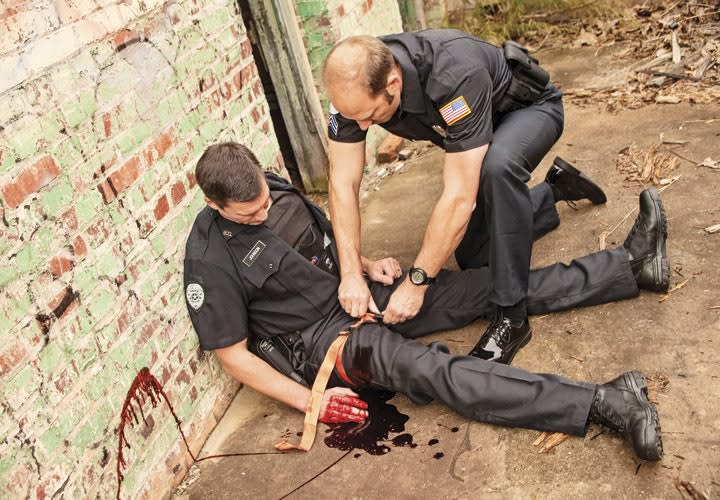Buchholz returned fire then treated his own gunshot wound, possibly saving his own life. The suspect was wounded and taken into custody. Buchholz was transported to a local hospital. Three days later he went home.
Law officers have long carried “bail out” bags stuffed with ammo, more ammo, snacks, and basic first-aid supplies. The question was always whether the officer would have access to the bag (or think to get it) when he or she needed it; fortunately, few have had to know the answer. Today, necessity and improved technology may be making bulky “bail out” bags a thing of the past, as they are being replaced by smaller pieces of kit that officers are more likely to have on or around them, especially hemostatic blood stoppers like QuikClot or tourniquets.
QuikClot, tourniquets, and other life-saving tools have become both easily accessible and incredibly affordable in the last few years thanks in large part to their development and refinement during U.S. military operations in Somalia, Iraq, and Afghanistan.
The need for law enforcement officers to have ready access to high-quality first-aid products has never been more pressing. In recent mass casualty and active shooter incidents, we have seen that medical responders can be overwhelmed or unable to enter the danger area to render aid. That means law enforcement has to be ready to step up and assist. Also, officers need access to emergency medical tools above and beyond what is found in a typical first-aid kit to save officer lives, even their own. In an officer-down scenario, one of the most critical things you can do to improve survival is to reduce blood loss.
Beyond First Aid












